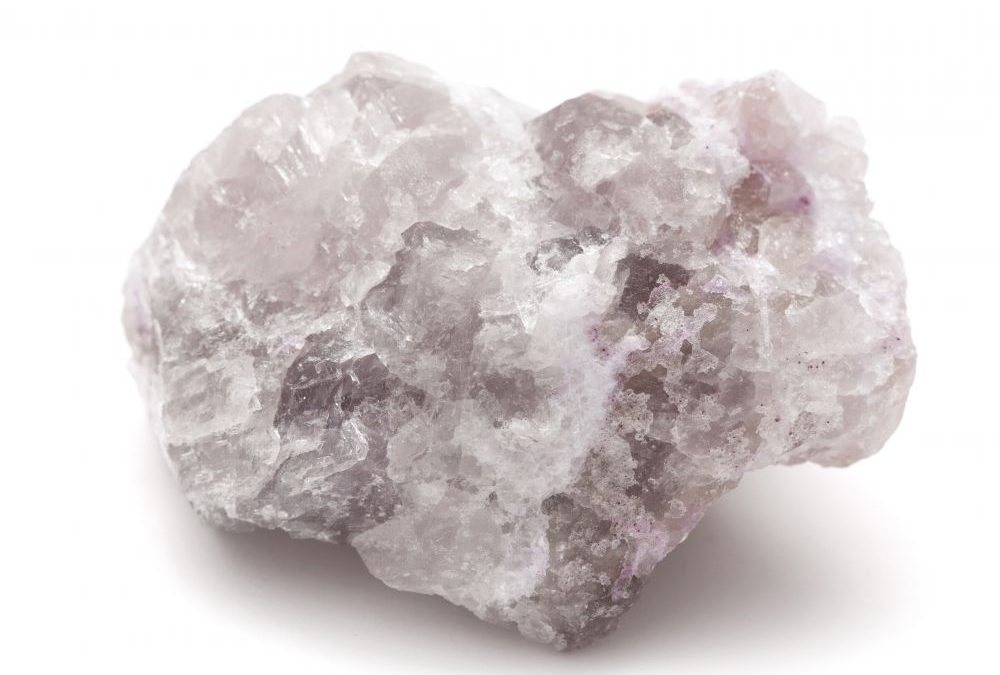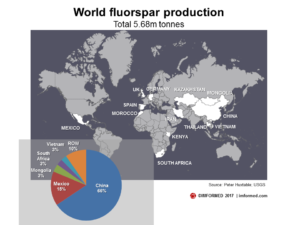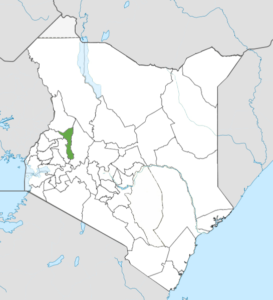Chemistry In the North Rift

Flourite. Image credit: mineralseducationcoalition.org
Let’s go down memory lane and revisit one of many Chemistry lessons that involved the Periodic Table.
If you remember, in Group 17 there is Fluorine (F), which is one of the halogens as well as a reactive chemical element. Its reactivity is due to its small atoms that attract electrons. Then, there’s the mineral that contains Fluorine: Fluorite or Fluorspar.
Fluorspar are colourless, transparent crystals that make up approximately 0.065 percent of the earth’s crust. Both the element and the mineral are named from the Latin word ‘fluere’, which means ‘to flow’, and Fluorite is a common cleansing agent in the study of metals – a metallurgist can confirm this.
This mineral occurs in sedimentary rocks, in the igneous rock called felsic, and in hot spring areas. When illuminated, fluorspar presents a bluish tinge which may otherwise be called fluorescence. But this mineral has commercial uses such as in steel, aluminum, and enamel production. The natural occurring crystals in fluorite were previously used in microscope lens manufacturing but now synthetic fluorite crystals have taken over and are easier to find. Because of this, they are used to make larger lenses for microscopes, telescopes, and cameras, to have them provide clear images.
In 1967, a fluorspar site was discovered in Kimwarer, a village on the northern end of the Rift Valley in Kenya. The Fluorspar Company of Kenya was founded in 1971 at the mine in Kerio Valley by the government of Kenya and operations began that year. It was – and still is – the only fluorspar mining company in East and Central Africa. In the nineties, the Kenyan government opted to privatize state owned businesses considered unprofitable. In 1997, the company was acquired by businessman Charles Field-Marsham and privatized. With new ownership, the company name was slightly altered to the Kenya Fluorspar Mining Company. Soon after this revamp, the company was mining and exporting to India, Germany and Italy. In 2005 production was valued at Sh 1.19 billion. As of 2008, KFMC displayed an impressive turnaround, producing up to 100,000 tonnes of fluorspar annually. By 2012, the Kenyan press boasted that at least 9,000 acres of land in Kimwarer contained fluorite. More so, some 400 Kenyans had steady employment under the company with additional benefits such as housing, health care, and education. After soda ash, fluorspar became the second most important mineral mined in Kenya.
Then came the next decade. An unforeseen issue of low export prices caused the company to halt operations in April 2016. Additionally, despite the company’s success and representation of Kenya’s mineral wealth, it had its fair share of controversies due to an unresolved issue from before its privatization. There had been a long-lasting row with the local community over land compensation. However, in 2018, the government stepped up to compensate landowners who were displaced all those years ago.

Fluorspar production map by branduk.net

Elgeyo-Marakwet location



